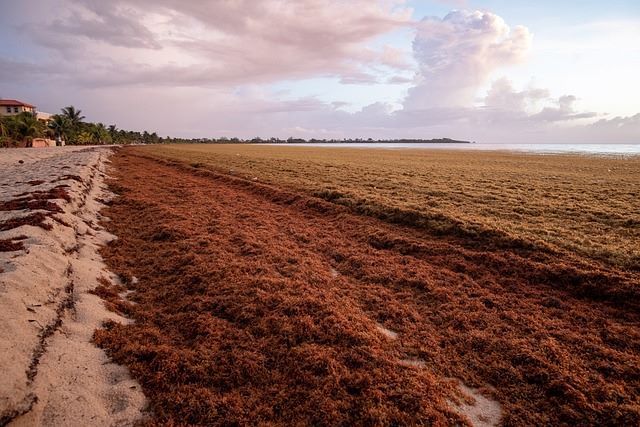The Untapped Potential of Sargassum as an Alternative to Antibiotics
Discover the economic and ecological impact of sargassum blooms on Mexican beaches, and learn how researchers are exploring the potential of this brown marine macroalgae to create nanocapsules for medical applications.

Sargassum is the common name for approximately three hundred species of brown marine macroalgae distributed throughout the world. These species inhabit intertidal and subtidal regions, forming large underwater forests. The great majority live attached to marine rocks and later detach, reaching the beaches at certain times of the year, where they are known as "blooming" or "upwelling".
Nowadays in Mexico, sargasso are famous due to the problems they cause. Since 2011 the beaches of the Mexican Caribbean have been flooded by tons of Sargassum fluitans and S. natans, called holopelagic because they remain floating throughout their life cycle without needing to adhere to the sea floor. The invasion of sargassum to our beaches produces significant economic losses to tourism, fishing and local commerce, and also affects the local ecosystem by preventing, for example, some species of sea turtle from reaching the beach to lay their eggs.
In 2018, around eighty-five thousand tons were collected from the beaches of the Riviera Maya, and every year the amount increases. The collection activities implemented are very costly, as special machinery and human resource are needed to remove and transport it. Therefore, many scientists are looking for the cause of this increase, as well as alternatives to take advantage of the sargassum biomass and give it a commercial value, in order to improve the situation.
Currently, some species of sargassum are used as food and, in the case of invasive species, they are being used to make paper, building blocks, bioplastics, fertilizers, biofuels and extraction of compounds to manufacture beauty products. This is due to the fact that it contains a large amount of commercially important compounds. Other elements of interest are carbohydrates, especially alginate and fucoidan, as well as polyphenols with antioxidant capacity.
Alginate has multiple applications as a thickening agent and film and gel former. It is used in the food, pharmaceutical, medical and printing industries. On the other hand, fucoidan is causing great interest in the scientific community for its biological properties as anticoagulant, antitumor, antimicrobial and antioxidant.
Like other brown algae, sargassum contains a high content of polyphenols. The main polyphenols present in sargassum are known as florotannins, and constitute approximately 5-12% of the dry mass of the seaweed. These compounds have been shown to have various health benefits for those who consume them, and there is scientific evidence that they have a high potential to inhibit the growth of microorganisms that cause important infections. For all these reasons, the use of these phenolic compounds has been proposed as a natural alternative to antibiotics, since there is currently an accelerated increase in infections caused by emerging pathogenic bacteria resistant to antibiotics, such as Campylobacter jejuni, which has become the main cause of infectious gastroenteritis caused by bacteria worldwide.
As an alternative to address both problems, Ramón Pacheco Ordaz, postdoctoral researcher of Professor Gabriela Ramos-Clamont Montfort's working group, from the Food Science Coordination of the Food and Development Research Center (CIAD), proposes to develop nanocapsules made from fucoidan and loaded with sargassum florotanins, with the aim of reducing the survival and adherence of C. jejuni to the intestine.
Pacheco Ordaz indicated that these studies have as a goal to look for new alternatives for the treatment of the infection. He added that currently several research groups in the country are working on different alternatives for the use of the sargassum that arrives to the Mexican Caribbean. "The more information is generated, the more efficiently this resource can be used and this problem can be solved in less time," he said. In addition to working with the species of the aforementioned region, Ramos Clamont's group will also study Sargassum sinicola, which is the main species in the Gulf of California.
Full Citation: Prensa y Colaboradores, Oficina de. “El Sargazo Y Su Posible Uso Como Alternativa a Los Antibióticos - Centro De Investigación En Alimentación Y Desarrollo (CIAD).” Centro De Investigación En Alimentación Y Desarrollo (CIAD), 10 Mar. 2023, www.ciad.mx/el-sargazo-y-su-posible-uso-como-alternativa-a-los-antibioticos.




